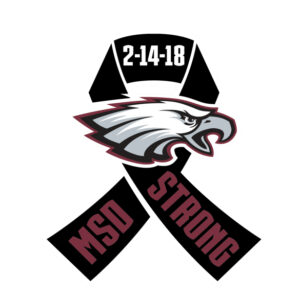In grief therapy, a prevailing misconception often surfaces—the notion that we must “move on” from loss. However, the truth lies in a different perspective, as Nora McInerny said in her Ted Talk, “We don’t move on from grief; we move forward with it”. This understanding is especially poignant as we approach the six-year mark of the tragic shooting at Marjory Stoneman Douglas High School (MSD), where 17 lives were lost. In this blog post, we delve into the concept of continuing bonds, remembering our loved ones, and the importance of honoring legacies as we navigate the journey through grief.
The Myth of Moving On:
Grief is not a linear process with a definitive endpoint. Instead of “moving on,” individuals learn to adapt to the ever-evolving landscape of their emotions. The myth of moving on implies leaving the pain behind, but true healing comes from acknowledging and integrating the loss into our lives.
Moving Forward with Grief:
Moving forward with grief involves recognizing that the love and memories shared with the departed remain a part of our narrative. The pain may change, but the connection endures. This perspective aligns with the concept of Phyllis Silverman’s “Continuing Bonds,” emphasizing an ongoing relationship with our loved ones in ways that are meaningful and unique to each individual.
Honoring Legacies:
Remembering and honoring the legacies of those we have lost is a powerful way to commemorate their lives. For the 17 lives lost at MSD six years ago, commemorating their impact on the world can be a source of strength, both for our community and, most importantly, for their surviving family members. Supporting Stand with Parkland as well as the surviving families’ initiatives and engaging in acts of kindness in their memory contribute to a lasting legacy. Doing acts of kindness or engaging in other activities your loved one enjoyed is an important way to honor their legacy and feel close connection as you move forward with your grief.
Ways to Embrace Continuing Bonds:
Create Rituals: Establishing rituals, whether through personal reflections or community events, provides a space to honor and remember our loved ones.
Storytelling: Sharing stories about your person or people helps keep their memories alive. Whether through written narratives, spoken word, or visual expressions, storytelling is a powerful way to connect with the essence of those we miss.
Acts of Kindness: Engage in acts of kindness in memory of your loved ones. Volunteering, supporting charitable causes, or simply being there for others are meaningful ways to honor their legacy.
Build Supportive Networks: Surround yourself with a supportive community that understands the complexities of grief. Sharing experiences and emotions with others who have faced similar losses can provide comfort and solace.
Conclusion:
As we navigate the intricate path of grief, let us remember that the goal is not to erase the pain but to carry our grief with us as we move forward. Embracing continuing bonds and honoring legacies allows us to find meaning, connection, and healing in the midst of profound loss. May the memory of the 17 lives lost at MSD serve as a reminder that, even in the face of tragedy, our capacity for resilience, empathy, and commemoration can illuminate the path ahead.




